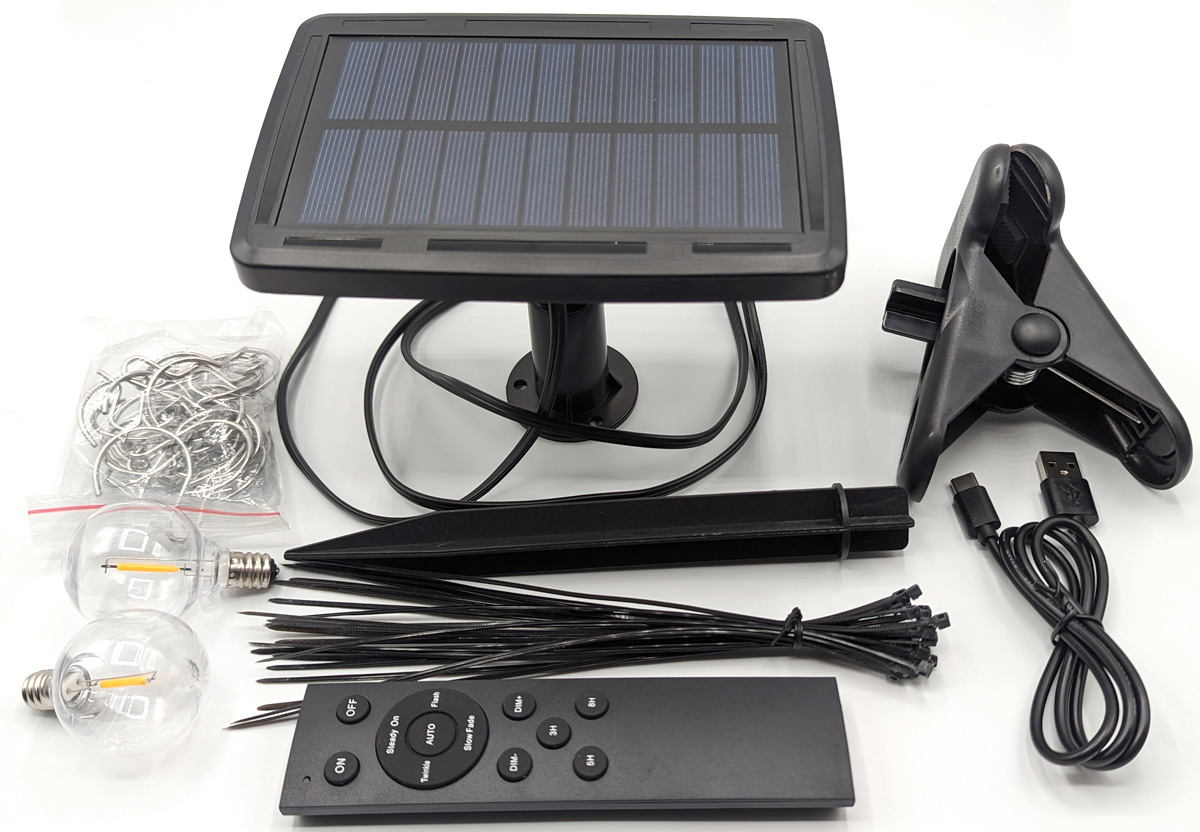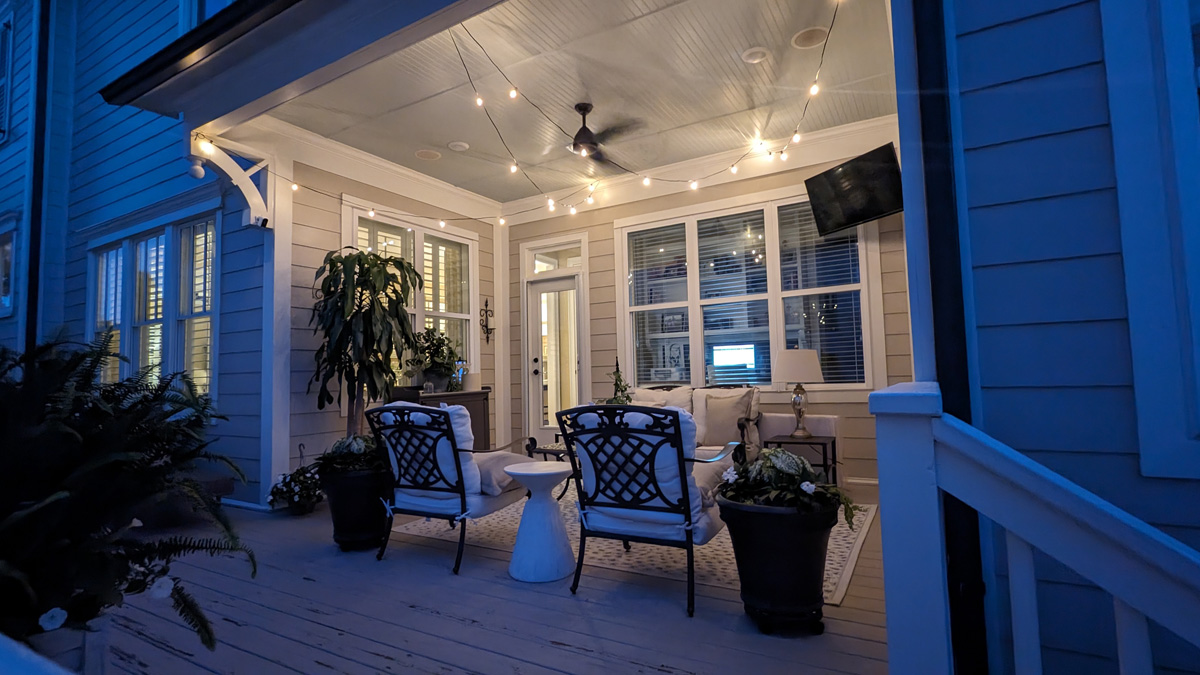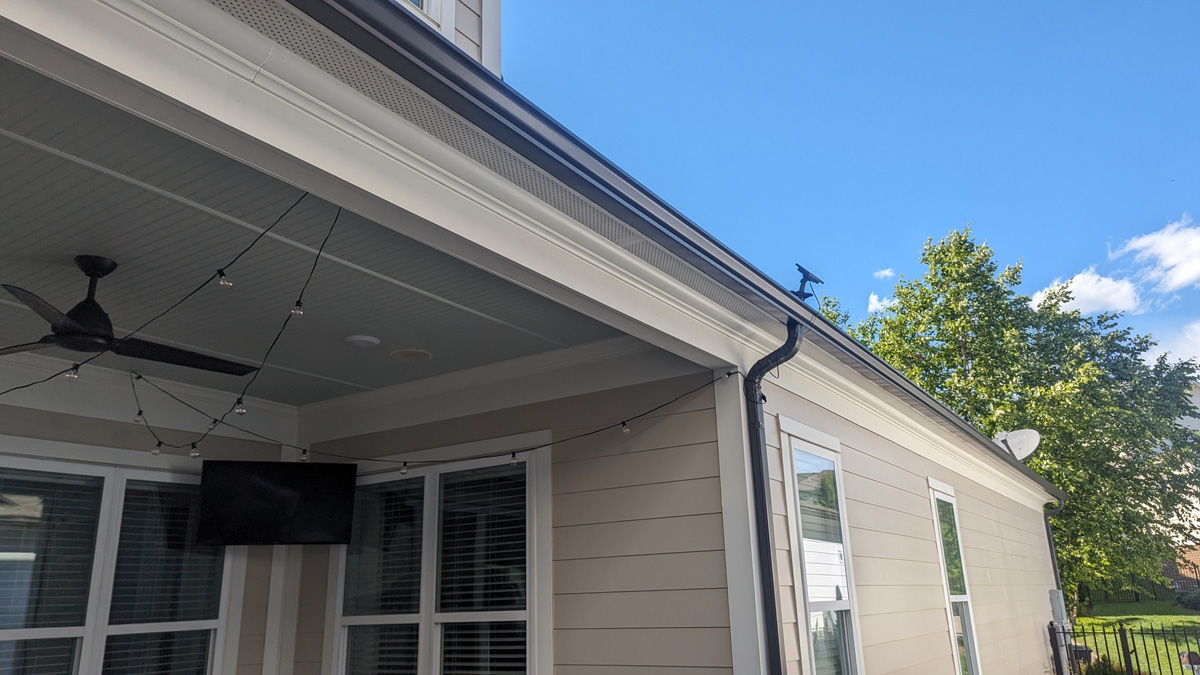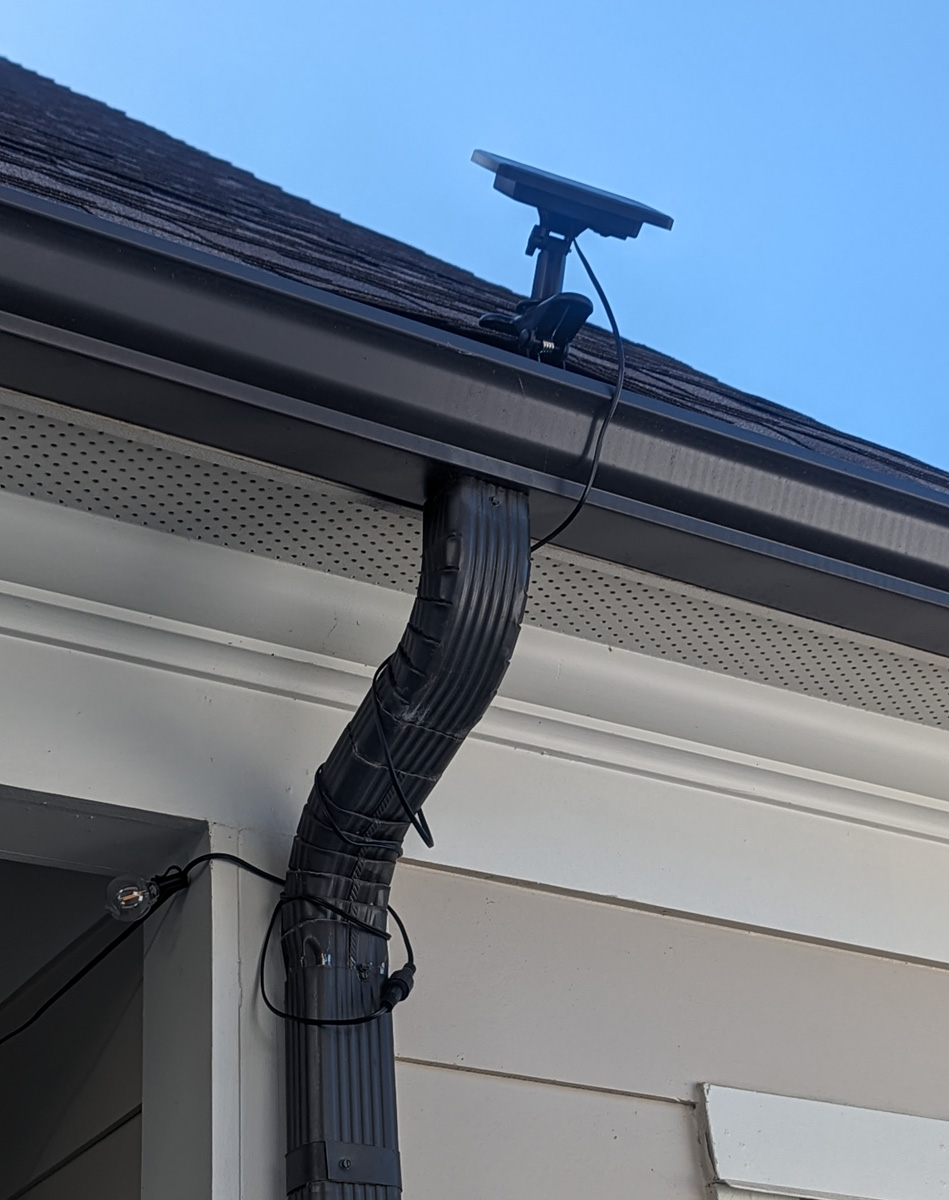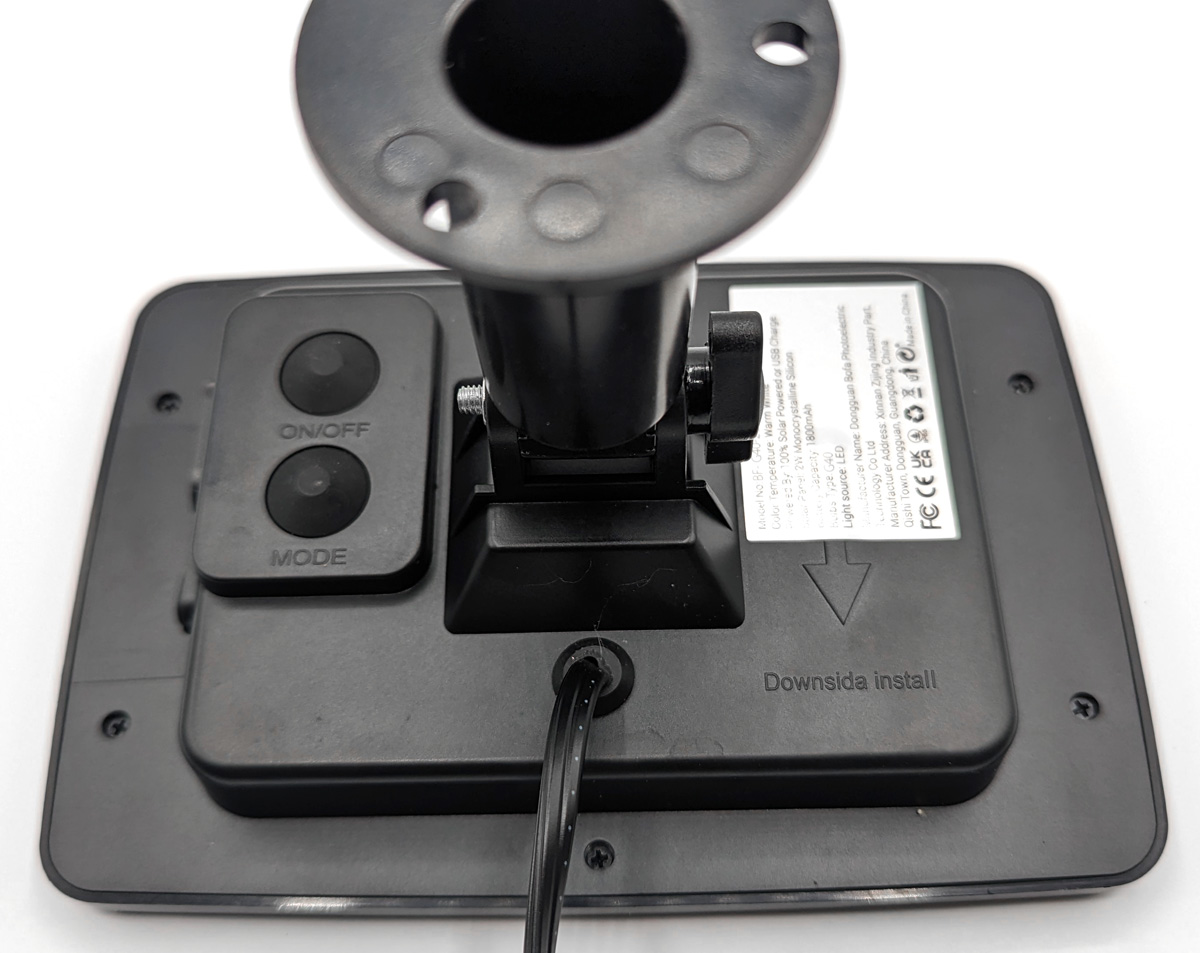REVIEW – It seems that everyone in my neighborhood is getting those string lights that adorn their side porches. It turns that boring side porch into a magical oasis! Well, maybe not that magical, but it sure does turn that side porch into a much more attractive place to hang out. So we wanted to try out some lights, and the Quntis solar string lights at a price of $39.99 seemed like a good deal. Let’s see how they turned out.
What is it?
A 56-ft string of outdoor, waterproof, shatterproof lights that are powered by a solar panel.
What’s in the box?
- The 56-ft string of lights
- 2W solar panel
- A user manual
- 2 extra bulbs, warm white
- I large clamp
- 1 ground stake
- 25 metal hooks
- A USB-C charging cable
- Wall mount plugs with screws
- 25 zip ties
- RF remote
Product specifications
- Solar panel is 2W, with 4000 mAh total battery capacity
- Charging time: 6 hrs of direct sunlight
- Light output time: up to 8 hrs
- Plastic, shatterproof bulbs are LED, type G40
- Waterproof Rating: IP44
- Power source: Charge the solar panel via USB-C charging cable or 100% solar charged by the sun
- Total product weight: 2.8 lbs
Features and performance
First things first, the Quntis 56-ft Solar String Lights is powered by a solar panel that must be mounted outside in direct exposure to the sun for at least 6 hours of direct sunlight to get the maximum charge. There is no option for plugging it up to a power source, so keep that in mind when purchasing these lights. You can charge the solar panel by plugging it up to an outlet via the USB-C port and charging cable if you want, but you’ll have to do that daily if you want to use them every day. And that’s pretty inconvenient, especially if you have the solar panel mounted on your roof like I do. But let’s get into the design before I share my results of how they performed.
The entire setup is very light, made a plastic, including the shatterproof bulbs. Honestly, the entire things feels a little cheap. Everything feels a bit like a cheap plastic toy, and I feel like these lights won’t last very long because of how it seems like the quality isn’t there. I could be proven wrong of course, so we will see. But having said all that, it works as designed. As long as I was able to get a full day’s sunlight to charge the panel, the lights worked as designed.
The bulbs are the G40 type, and they are made of shatterproof plastic which is great, because there were several times that I bumped them against the floor and the walls as I was installing them and they were unfazed. You’ll also get 2 additional bulbs in the box in the event that you need them. On the side of the light sockets that are on the string you’ll find a built-in plastic clip that can be used to attach the string to whatever surface you are working with. The package also includes some small metal hooks that are similar to the hooks I have used in the past to attach my Christmas lights to the roof of my house. The package includes 25 zip ties as well, in case you would rather use those. So you’ll have a few different methods for connecting the lights where you want them.
The 56 ft string of lights was just enough to fit perfectly on my side porch which is 15 ft by 11 ft. Here is a picture of the final installation:
Having string lights on our side porch was exactly as we expected it would be… perfect! It really does provide a wonderful ambiance and setting for making our side porch inviting and cozy. However, these lights are not that bright, even on the highest brightness (there are 4 levels, accessed by the RF remote). But for us, the point of having string lights on the side porch wasn’t to have lights that shine as bright as could be. We wanted dim lights, so the lack of strong brightness wasn’t an issue with our use case. But if you are expecting really bright lights with this setup, you’ll be disappointed.
The Quntis 56-ft Solar String Lights are powered by the aforementioned 2W solar panel, which as you can see from the pics below, we mounted on the edge of our roof using the included clip:
The panel has an adjustable handle on the back so you can adjust the panel to whatever angle you need, and the package comes with the large spring-loaded clip that you can use to clip the panel to whatever you want (in my case, the edge of my roof near the gutter), or a stake that you can use to stake the panel to the ground. So basically, you can attach either the clip or the stake to the end of the adjustable handle.
On the side of the panel, covered by a weatherproof flap, is the USB-C port for charging if you need it. On the back of the panel you’ll find 2 buttons: 1 for “On/Off” and 1 for “Mode”. The On/Off button is pretty self-explanatory, and the Mode button is for switching between 4 different modes for the lights: steady on, twinkle, flash, and show fade. Interestingly, you don’t actually need to press the mode button because the lights also come with an RF remote that has a button for each of those 4 modes.
So before you use the lights for the first time you are supposed to either charge the panel for 2 days of direct sunlight, or charge it fully using the USB-C port. (I chose to charge it via USB-C, which was faster than waiting 2 days!) You are also supposed to press the On/Off button once to turn the lights on. That was kinda strange because the On/Off button is covered with a weatherproof plastic cover, so you can’t really tell if you were successful in turning it on because there is no visual indicator that you did it. In any event, you have to turn it “on” before it can successfully charge the panel.
You’ll also see on the remote that there are buttons for “Dim +” and “Dim –“, which allows you to cycle through 4 levels of brightness. And as I mentioned previously, the highest level isn’t that bright. There are 3 additional timer buttons on the remote that are labeled “3H”, “5H” and “8H”, which enable you to set how many hours you want the lights to stay on the evening once they come on. If you don’t press any of these buttons, then the lights will last as long as the battery will last, which in my case was generally about 6-7 hrs on the dimmest setting. I should also mention that when you choose one of those buttons for 3/5/8 hrs, the lights do not remember that setting and you’ll have to choose it again the following night using the remote. It would be nice if the lights remembered that setting.
Finally, I will mention my biggest disappointment with these solar lights. The RF remote doesn’t actually work with the lights until the solar panel detects darkness. So in the early evening before it got dark, we thought we could manually turn on the lights with the remote and use the power that the panel had gathered during the day. But as it turns out, the panel has to have darkness before it turns on and you can use the remote. That’s really disappointing, and kindof a deal-breaker for us.
What I like about the Quntis 56-ft Solar String Lights
- The solar panel performs as designed, providing around 6-7 hrs of power to the bulbs after a sunny day.
- Very easy to install.
- The light bulbs are shatterproof.
- The entire setup is unaffected by the rain.
What I would change
- I wish you could turn the lights on with the remote at any time, but the solar panel must detect darkness before anything happens with the bulbs and the remote, even if the battery is charged.
- They are on the expensive side compared to competing products on Amazon.
- The bulbs are not that bright.
- If the sun doesn’t shine, there’s no power for the bulbs.
Final thoughts
The idea of never having to plug these lights up was really attractive to me. I was willing to put up with the bulbs not being very bright, and the fact that the bulbs are LED (no heat!) and are made of shatterproof plastic was a huge plus to me. But I experienced the true downside of anything solar powered. When the sun doesn’t shine, the solar panel can’t build up what it needs to power the lights. Sure, after numerous rainy, cloudy days I could have charged the panel using the USB-C port, but I am not getting a ladder out every day to take it down from the roof and charge it, and then put it back. I suppose if your use case was such that your lights are installed in a location where you can easily grab the panel and charge it via USB-C, then perhaps that would be a bit more acceptable, but still. When you have a solar setup you just want it to work without you having to constantly monkey with it. And on top of all that, you can’t use this string of lights with the remote until the panel detects darkness, even if the panel is fully charged. So in the early evening we couldn’t manually turn them on using the remote before the sun went down, which is disappointing. If we were able to turn them on with the remote before it got completely dark, then I would have no problem recommending these lights, despite some of the other issues that naturally come with solar lights.
I really wanted to like these solar lights, and the price was decent. But considering everything, the only way I can recommend this product is if your use case is such that you don’t need to turn the lights on manually and you are ok with them only coming on generally after sunny days. If you want more control over using the lights on your own schedule, skip solar lights and opt for lights that are plugged up to power. As for what we will do with these solar lights, we are going to put them in our landscaping and purchase some powered lights for the side porch.
Price: $39.99
Where to buy: Amazon
Source: The sample of this product was provided by Quntis. Quntis did not have a final say on the review and did not preview the review before it was published.

